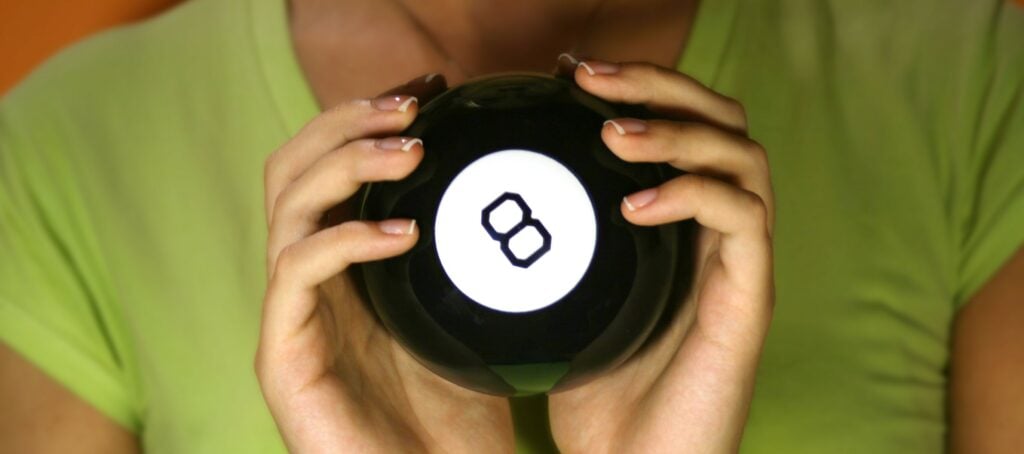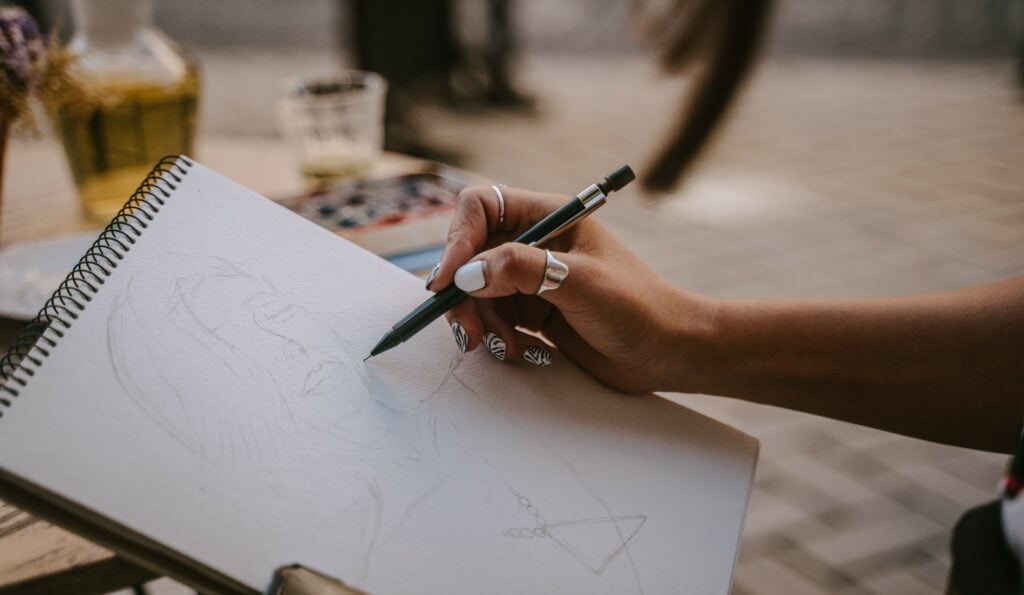The power of self-awareness: A whole-person perspective


“Hey! Watch what you’re doing, young lady!”


Jerilyn didn’t know what the big deal was. She didn’t mean to bump into the elderly lady’s shopping cart. It’s not like she did any real damage, just shook the items around a bit.
As the other voices rolling around in her head became louder and more insistent, she found herself quickly moving on from the collision back to musings of the argument she’d had with her boyfriend earlier that morning. Didn’t he appreciate her anymore? She drives herself into the ground by doing whatever he wants, so why is he so picky about everything?
The ruminations continue as she makes her way through the store, the checkout line, packing her lot into the car, and the drive home. As each mile passes, her anger grows. Images of various scenarios where she “shows him a thing or two” flutter one after the other across her mind’s eye. These flashes make her feel like she’s doing something, which brings her a sense of satisfaction. Her anger begins to subside as she settles on which one of the vignettes she most wants to enact.
Once home, she hauls the groceries inside, making her way toward the kitchen, and starts putting them away. But then she stops. She’s noticed that a few things are missing. She knew they were on her list.
It must have been that old biddy! She distracted me. The familiar anger spikes and the pictures of messing with her boyfriend return, rekindling the irritation into rage. Jerilyn plops down at the kitchen table where she notices an ache in her neck. She begins to rub on it as her boyfriend, Torrence, comes through the door, all smiles with a bouquet of flowers.
“I know you were upset when I left this morning. I’m not sure what I did, but I brought these for you, so you’ll know I care and want to work it out,” he says with affection, humbly offering his gift.
Jerilyn, pushed solely by internal forces, brushes past the roses and baby’s breath and stomps into the bedroom, slamming the door. What proceeds after that includes hours of pleading, questioning, and arguing over what neither of them truly feels, remembers, or even cares about anymore. Jerilyn and Torrence both feel bad and neither one of them knows how things got so bad.
What passes through your mind as you read this scenario? Maybe you find yourself curious about what Torrence did that was so awful. Or you might wonder what’s going on with Jerilyn. Perhaps you noticed a few cognitive distortions or other typical pitfalls of thinking common to us humans. You may have some empathy for Jerilyn’s plight—whatever it is.
Certainly, many of the details haven’t been shared, but what if I told you the issue here has to do with self-awareness and all other details are secondary (if important at all)? Would you have thought of it that way?
If you answered no, I’m right there with you. That’s because many of us struggle to see self-awareness from a broader perspective.
Redefining self-awareness
Self-awareness is by no means a new topic. References to it have been made since the time of Socrates. Many texts from major world religions, such as Christianity, Islam, Buddhism, and Hinduism (at least) imply a sense of self (or many selves, as the case may be). Virtually all facets of life and all known ages of history hold this concept.
Must be quite a thing, this self-awareness business.
In fact, it is!
Now, I know what you’re thinking…
“But wait, if the idea of it has been around so long, then surely, we know all there is to know about it, right? We know we are, “selves,” with our own sensations, desires, and motives separate from and impactful to others. We know this sense may develop and be honed over time. Watch television for just a few minutes and you’ll likely hear an encouraging reference to “being yourself.” Isn’t all of that enough?”
As a neuroscience-informed psycho-educator (aka “science interpreter and teacher”) and trauma therapist, I state in no uncertain terms, “No!” Our knowledge of self-awareness these days are abstract and theoretical, or involve a surface-level knowledge of and focus on our identity and motivations. This understanding works, until it doesn’t.
If self-awareness is to be of a more substantial benefit to us, it’s not enough to have an abstract, cursory, or philosophical understanding of it. It will take more than one article to explain this, but we benefit greatly when we understand the power of “self-awareness” on a “whole-person” level.
I can imagine you now as you scratch your head and say, “What does that mean?”
Ooooh! I’m so glad you asked.
The limitations of awareness
Did you notice Jerilyn’s lack of connection to the present moment in the story above? Her body seems to float from one moment to the next, mystically carried by one force or another, but her mind is elsewhere, in the past or in the future. Ruminations and revenge pictures take center stage and the things she wants to accomplish—the things that are truly meaningful to her—fall by the wayside. When she arrives home and sees that she has not bought everything on her list, she immediately blames the lady she bumped into for the lack.
Have you seen or experienced anything like this before? Before I explain what’s happening here, I have an experiment for you to try.
After reading this paragraph, decide on something you want to do. Perhaps get a cup of coffee, sweep the kitchen floor, take out the trash, or clean the bathroom sink. Something that will take at least five minutes.
Feel the time go by, noticing every movement you make. In other words, stay aware of yourself for the entire activity. Before you start, note the time. I mean it. Write it down. Go off and do your chore. Go ahead. I’ll wait.
Done?
Great. Now, think back. Do you remember every single action you took? Did you have an awareness of time passing throughout? If so, then do it again, adding two minutes each time until you get to a point that you’re no longer able to keep track of things. Even if you must add time, you’re likely not to need much before you find yourself distracted. More likely, even one minute didn’t pass without an interruption to your awareness.
At some point, we’ll disengage from our awareness no matter how much we try not to do so. This is the gift and the problem of awareness. The fact that we lose connection to it so fast keeps us efficient, but it can also distort our perception of ourselves and the world around us. (See Part 2 of this series for more on this topic—and just for fun, keep practicing this throughout the week, trying to add more and more time. See what happens.)
Awareness versus attention
Let’s turn our attention now to…attention. There are many misunderstandings about this common cognitive function, such as the “goldfish myth,” which purports that our attention spans are shorter than that of a goldfish.1 We know this isn’t true because even people with attention-deficit hyperactivity disorder (ADHD) can attend to something for hours if they want. Yes, I said, “if they want.” We’re closer to the truth when we say our attention depends on our interest level.
So, what really is attention and what is the difference between awareness and attention?
Before I answer, I have another activity for you. Think back to the last time you drove a familiar route, maybe to work or a friend’s house. Thanks to the COVID-19 pandemic, it may have been some time since you did this. I’m not asking you to think of the drive to the grocery store as that is likely pretty quick, but something more substantial. If you haven’t done this type of trip in a while, then think about vacuuming the house or taking part in a common work project of at least ten minutes.
Throughout all these activities, you may be aware without paying attention.
“What? Is that a thing?”
Why, yes…yes, it is.
Think about it. As you drive (for instance), imagine I ask you what you’re doing. After you finish laughing at me, you easily retort, “I’m driving, oh silly one!” As you say this, you indicate your awareness (on some level) that you’re moving down the road in the car.
Now, if I ask you what we’ve passed along the way or what the upcoming crossroad is, you might not be so quick to laugh. Odds are your attention has been elsewhere, such as on the cool murder mystery you’re listening to on audio, playing a frustrating discussion with a colleague over and over in your mind, or wondering what on earth you’ll be asked next. You are not, usually, paying much conscious attention to what is going on around you or even on the road you travel. At least, not until you arrive home or accidentally pass your turn.
Therefore, awareness is the state of being conscious of yourself and your environment and attention is the ability to apply that consciousness to something specific. Awareness is having the muscle, attention is exercising it. Awareness is knowing there is a self. Attention is, well, attending to it.
Now, think back to Jerilyn. She was aware of feeling bad, of having had an upsetting interaction with Torrence, but she had not paid attention to any of the causes/effects or actual sources of the feelings, and this led to the misperceptions and the extended fighting later in the day.
Where am I going with this?
Like it or not, if attention plays a role in all of this, then we’re nowhere near as self-aware as we think we are. That isn’t always a problem, and it’s not a flaw on our part. Brains disengage for a reason. However, though consciousness fades through no fault of our own, it is our responsibility to bring it back when necessary.
In Part 2 of this series, we’ll explore the anatomy of self-awareness and the importance of the whole-person perspective from the neuroscience point-of-view to give you a fuller understanding of why we create inaccurate stories and why it is so difficult to stay aware of ourselves. Then, in later editions, you’ll learn daily practices to help.
Listen, folks…no one buys a car and puts it on the road and never checks the rearview or side mirrors, the gas indicator, or looks at the road ahead. Yet, every day, we put a machine far more complicated and dangerous than an automobile on the road of life without so much as a minor check-in through the day. It’s true that we’re amazing and really, really cool—but we need to learn to drive the machine that is us with more intention.
We must learn to tell ourselves more accurate stories about our lives and circumstances, and that, lovely readers, will help us tap into the true power of self-awareness.

About the author
Hannah Smith, MA, LMHC, CGP, is the founder of Potential Finders Network. She is also an author, blogger, coach, consultant, international board certified group leader, and nationwide trainer from the Seattle area. She has studied and practiced extensively in neuroscience-informed clinical treatment, as well as personal and professional development, and she guest lectures in academic and clinical settings around the country. Her personal and professional experience in the United States and abroad has enabled her to develop multimodal, culturally competent, cutting-edge, and relevant training programs offered in an engaging presentation style.
Related articles

Who’s lucky enough for Lucky Girl syndrome?
Healthy positive thinking can have emotional benefits. But as the TikTok...

Meditation: Types, benefits, and techniques for beginners
Learn what meditation is, how it can benefit your mental health, and how to get...

Should I break up with my therapist? 5 signs it’s the right time
Maybe you’d like to try a new kind of therapy, or you’ve done the work and...

How you think and feel about your appearance can affect your sense of...
